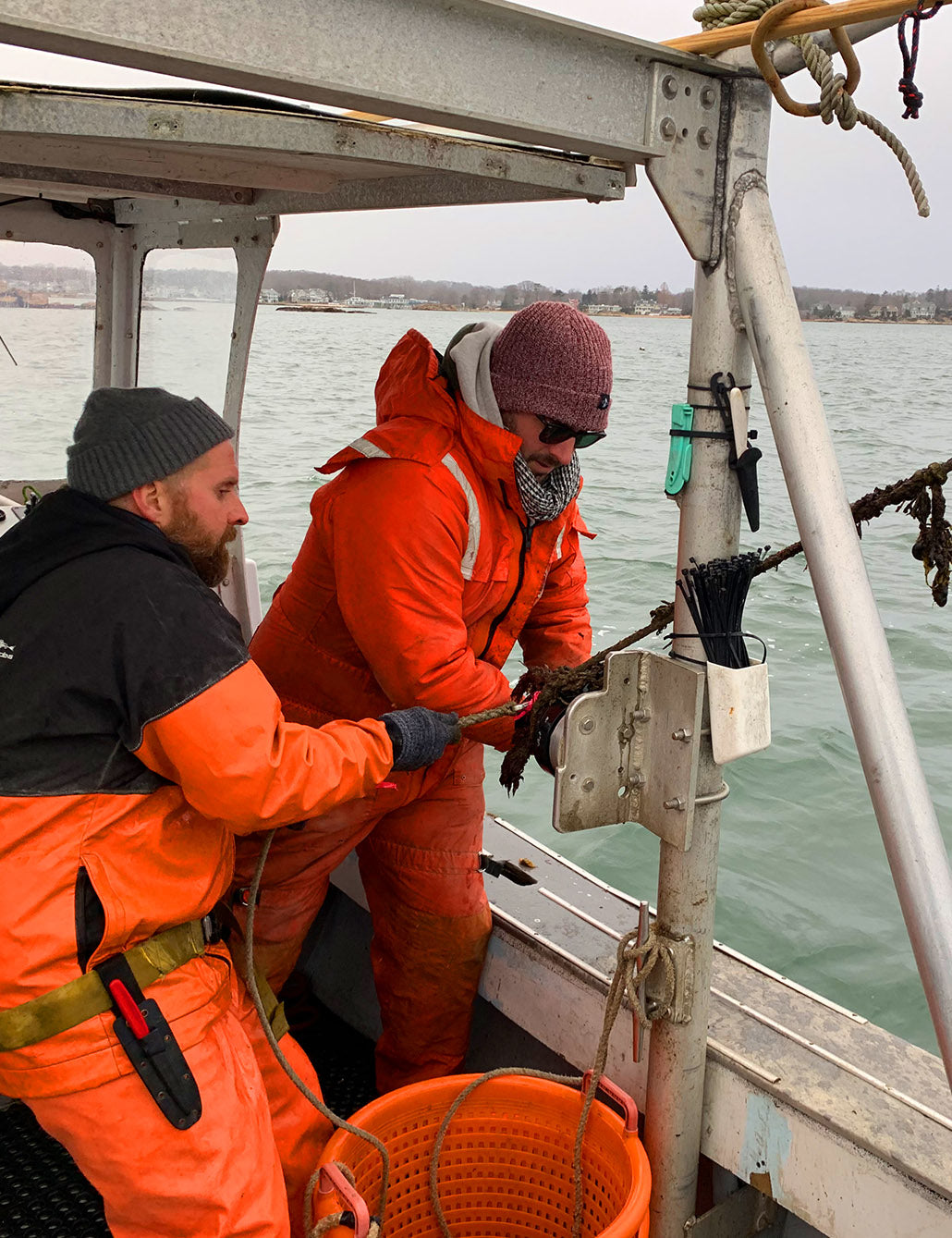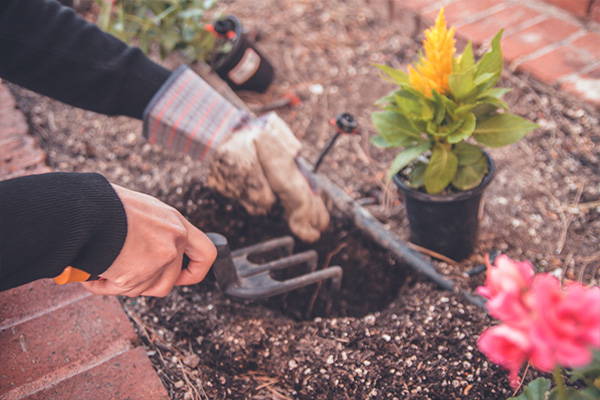By Andrew Iida l Head Writer & Resident EMT
Early in 2019, California’s almost two-decade long drought finally ended. Reservoirs filled up, streams started flowing again, and greenery returned to San Diego. Many of my neighbors welcomed the returning rain and the end of water usage restrictions as an opportunity to revitalize the brown, under-watered lawns in their backyards. But I had already given up on the grass a long time ago. Behind my house today, instead of a large lawn, you’ll find a small garden with peppers, tomatoes, onions, basil, carrots, and a few flowers, all grown without synthetic fertilizers or pesticides.
The droughts will return eventually, and climate scientists are warning us that they will likely become more severe as the world’s climate continues to change, so there’s no better time than now to swap out your lawn for a more sustainable garden. But not all gardens are a net benefit for the environment. If you use a lot of synthetic pesticides and fertilizers, you will be contributing more to greenhouse gas emissions. If you’re trying to go green by growing your own food, here are 5 tips to help you get started.
1. Start with good soil
The first thing you’ll need for a successful garden is an area with good soil. If you’re not lucky enough to live in an area with soil that’s already rich in nutrients and organic material, you’ll need to do some work. It might be tempting to go to a garden store and buy synthetic fertilizers or manure, but both of these produce greenhouse gasses, so if your goal in starting a garden is to reduce your carbon footprint, you’ll want to look into other methods.
When I started my garden, I was working with sandy dirt that barely held water. I almost bought chicken manure and cow manure before I found something that would give me high-quality soil without harming the rest of the world: green manure. It’s not actually manure at all; the term refers to the process of planting a thick-growing cover crop and later tilling the mature plants into the soil. As they decompose, they break down into nutrients that feed the plants.
I chose crimson clover as my cover crop, which grew exceptionally well in San Diego. Within a few months, the clover plants were getting close to 3 feet tall and peaked with bright red flowers. Bees loved the clover flowers, so when it was time to cut the plants down and till them into the soil, I left a few of them up. A garden can never have too many bees!

My crimson clover just beginning to sprout. Full-grown cow for scale.
l decomposers like earthworms. Because clover is part of the legume family, it has the additional benefit of adding nitrogen to the soil. A symbiotic bacteria found in legumes draws nitrogen from the atmosphere and stores it in nodules on the plant’s roots, so instead of adding nitrogen to my garden in a synthetic form, I took nitrogen from the air itself.
2. Learn how to water efficiently
Learning how to properly water your plants is probably the most crucial skill for a new gardener to learn. Each type of plant will need a different amount of water, and the necessary levels can be impacted by soil type, climate, and sun exposure. You’ll need to figure out your garden’s specific watering needs, but we do have some tips that will help reduce the water usage for any gardener.
The most important step is to add a layer of mulch to your garden, which can reduce your water use by 25%. You should definitely try to use organic mulch like wood chips. A layer of mulch just a few inches deep will reduce water loss from evaporation because it helps trap moisture and keep the soil cool. Mulch will also help control weeds, which compete with your garden for water and nutrients. If you choose an organic mulch, it will also help fertilize your garden as it decomposes.
Another way to reduce your water use is to water your plants in the early morning when the air is cool. Watering during the hottest period of the day will mean that you are losing a lot of your water from evaporation. Try to avoid watering your garden in the evening, because without the sun to dry your leaves and flowers, the wet foliage will invite insects and bad fungi to take over. This is also why you should water your plants at the base instead of spraying the whole plant.
3. Start Composting
Up to 40% of the food produced in the United States ends up in a landfill each year. Around the world, nearly a trillion dollars is wasted in food. When food goes to a landfill, it decomposes anaerobically (without oxygen), which produces methane gas. The World Wildlife Fund tells us that if we eliminated our food waste in this country alone, it would be equivalent to taking 37 million cars off the road.
We can start by composting in our own homes. Food waste that goes into a compost bin decomposes aerobically, so you avoid the extra methane in our atmosphere. Don’t throw away that banana peel or stale bread! Instead, put it into a compost bin and turn it into nutrient-rich soil that will help your plants grow faster and larger than ever.
Composting can be very easy. All you’ll need is an old trash can with a few holes poked in the bottom and sides for air flow. Then just add compostable material, stir it about once a week, and wait for it to turn into soil. You’ll want to add a mixture of green and brown materials for efficient composting. Greens are things like food scraps, cut grass, and plant clippings. Browns include shredded sticks, fallen leaves, sawdust, straw, and cardboard. Some people add paper to their compost piles, but it’s best to avoid bleached or glossy paper.

The most simple composting method: throw it in a heap and wait for it to decompose.
Avoid adding meat, bones, dairy products, eggs, and animal waste, which will rot and start to smell awful. You can compost pretty much any plant material that hasn’t been chemically treated, including tea bags (with the staples removed), coffee grounds, and coffee filters. You can even compost your pet’s fur, which is very high in nitrogen.
4. Choose plants that work well for your location
If you live in San Diego, you’re pretty lucky. Our Mediterranean climate is perfect for growing just about anything, as long as your garden gets at least 6 hours of sunlight. If your garden gets too much sun, your plants might start to suffer from heat damage. Look for signs like wilting plants even though the soil is moist and bleached leaves that have the most sun exposure. You might need to install a shade if you see that your plants are getting too much sun.
If you live somewhere with a more extreme climate, you should look for plants that thrive in your region. For example, the extreme summers in Phoenix, Arizona mean that trying to grow strawberries usually ends up being a waste of time, water, and fertilizer, but eggplants will probably give you more fruit than you’ll want to eat on your own.
Whenever possible, you should try to find native plants for your garden. Because they come from the area, they’re perfectly suited to the climate, so they will require fewer resources and less attention than other plants. Grapes, cranberries, blueberries, sunflowers, and chives are all edible plants native to North America, so they might be great choices for your garden.

Thai chili peppers have been growing like crazy in my backyard. Note the yellowing leaves—I didn’t use nearly enough mulch here, so they need more water!
In my garden, the plants that have thrived the most have been my chilli peppers, basil, and unsurprisingly, a type of tomato called “San Diego tomato”. It will take some trial and error to find out which plants will do best in your garden. There’s no definitive guide on which plants are the best for you, because it is dependent on soil type, sun exposure, and other variables. A good place to start would be to look up a planting guide for your area. I’ve been using the Master Gardener Association of San Diego County’s planting guide, and their guidelines have been successful in my garden.
5. Avoid pesticides
This is especially important if you plan to grow food, which you don’t want contaminated with harmful chemicals. But moving to more natural methods of pest control will have impacts that extend far beyond ourselves. Pesticides are linked to the emission of nitrous oxide, which is 300 times worse for our atmosphere than carbon dioxide, so they contribute a great deal to global climate change. They also kill honey bees, and are one cause of colony collapse disorder, which is threatening bee populations worldwide. The vast majority of our food relies on bees for pollination, so their loss is a huge problem.
If you have a pest problem in your garden, there are plenty of things you can do without resorting to pesticides. One of the best things to do is to attract predators for whatever creature is eating your plants. For aphids and mites, you want to bring ladybugs, which are very attracted to dill, fennel, and cilantro. Ladybugs eat pollen, so any flowers that thrive in your garden will be a great way to control pests, as well as encouraging bees to form colonies nearby.

You’re supposed to cut off the flowers on basil plants to help the leaves grow, but I left them on a small basil plant to help attract beneficial insects. Bees absolutely love them!
You can also buy predatory insects and release them if you need a quick solution and can’t wait for them to arrive naturally. Ladybugs can be found in most garden stores, and praying mantis egg sacs can be ordered online. If you’re having a lot of trouble with caterpillars or grasshoppers, try putting some bird feeders near your garden.
In San Diego, one of the pests that might give you problems is the Italian white snail, an invasive species that reproduces very quickly. The best solution seems to be a garlic and chili spray. Finely mince an entire head of garlic and let it soak in a quart of water for a day before straining the garlic out. Then, just add some chili powder and a few drops of dish soap to help it stick to plants. SFGate recommends 1.5 tsp of chili powder, but I used a heaping tablespoonfuls just to be sure. I really don’t like those snails. I’ve also had some luck with beer traps, but don’t use the Everyday California IPA because that stuff is too good to waste.








